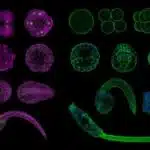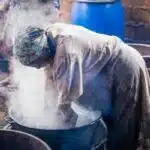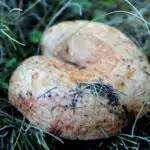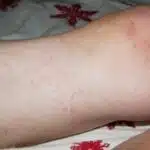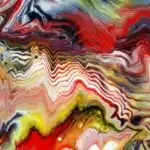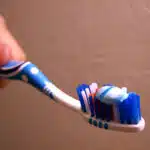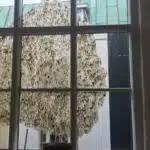Hair dye stains on clothing are a common occurrence for anyone who colors their hair at home or in a salon. While hair dye is designed to be long-lasting on the hair, it can be difficult to remove from fabrics. Removing hair dye stains from clothes can be a challenging task, but with the right techniques and products, it is possible to restore your clothing to its original state.
As a laundry expert, I have encountered numerous cases of hair dye stains on clothing over the years. It is essential to take prompt action when dealing with these types of stains as they tend to set quickly and become more challenging to remove with time. In this article, I will share some tips and tricks for removing hair dye stains from clothes using readily available household items and commercial cleaning products. Whether you are dealing with a small spot or an extensive stain, the techniques outlined in this article will help you tackle the problem effectively and restore your garments’ appearance.
Understanding The Types Of Hair Dye Stains
Hair dye stains can be very stubborn and difficult to remove, especially when they are left untreated for a long period of time. Before attempting to remove the stain, it is important to understand the different types of hair dyes that can cause staining on fabric. Permanent hair dyes contain oxidative dyes that penetrate the hair shaft and can also penetrate fabric fibers. Semi-permanent and temporary hair dyes contain direct dyes that only coat the surface of the hair and are less likely to cause staining on fabrics.
The most common fabrics affected by hair dye stains include cotton, polyester, nylon, and silk. These fabrics are highly susceptible to staining due to their porous nature and ability to absorb color easily. When removing hair dye stains from these fabrics, it is important to act quickly and use the appropriate cleaning method for each specific type of fabric.
It is also important to note that different colors of hair dye may require different methods for removal. For example, darker colors such as black or dark brown may be more difficult to remove than lighter shades like blonde or pastel colors. Understanding the type of hair dye stain you are dealing with and the specific fabric it has stained will help in determining the best course of action for successful removal. With this knowledge in mind, let us move on to pre-treating the stain before attempting any further cleaning process.
Pre-Treating The Stain
- Pre-soaking is a crucial step in the process of removing hair dye stains from clothing as it allows the dye to loosen from the fabric.
- To pre-soak, fill a sink with warm water, add a tablespoon of detergent, and submerge the stained item for at least 15 minutes.
- Detergent pretreat can be used to further break down the stain. Rub a small amount of detergent into the affected areas and let it sit for several minutes.
- Rinse the item in warm water and then launder as usual.
Pre-Soak
To ensure the removal of hair dye stains from clothes, pre-treating the stain is crucial. One effective pre-treatment method is pre-soaking. The benefits of pre-soaking are numerous, but most importantly, it loosens the stain and prevents it from setting into the fabric.
The pre-soaking technique varies depending on the type of fabric. For cotton, polyester or other synthetic fabrics, use warm water mixed with laundry detergent or stain remover. Soak for at least 30 minutes before washing as usual. For delicate fabrics such as silk or wool, use cold water and a gentle detergent or specialized stain remover to avoid damaging the fabric.
It’s important to note that leaving the clothes soaking for too long may cause discoloration or damage to the fabric. Therefore, always check garment care instructions before attempting any pre-treatment methods. With proper pre-soaking techniques for different fabric types, you can effectively remove hair dye stains from your clothes and restore them to their original condition.
Detergent Pretreat
When it comes to pre-treating hair dye stains on clothes, there are several techniques that can be used. One of the most effective methods is using a detergent pretreat. This involves applying a small amount of laundry detergent directly onto the stain before washing the garment.
To use this method, wet the stained area and apply a small amount of detergent. Rub gently to work the detergent into the fabric and let it sit for 5-10 minutes before washing as usual. Using fabric softener in the wash can also help to further loosen the stain and minimize any remaining discoloration.
Stain removal hacks such as this can be incredibly helpful in restoring your clothes to their original condition. However, it’s important to always check the care label on your garments before attempting any pre-treatment methods. By following these guidelines, you can effectively remove hair dye stains and enjoy clean, fresh-smelling clothes once again.
Soaking The Stained Fabric
The stain of hair dye on clothes can be a frustrating sight for anyone. However, there is no need to panic as this problem has a solution. One of the most effective ways to remove hair dye stains from clothes is by soaking them. This method not only helps in removing the stain but also protects the fabric from getting damaged.
Benefits of soaking are many. Soaking helps in loosening up the dye particles that have been absorbed by the fabric. It also helps in diluting the dye color and makes it easier to remove. Additionally, soaking can help in removing any residual chemicals left on the fabric after washing with water. The length of soaking time depends on how deep and old the stain is.
When it comes to removing hair dye stains, patience is key. The longer you soak, the better results you will get. Ideally, one should soak for at least 30 minutes or more depending on how stubborn the stain is. However, one must be careful not to over-soak as it can cause damage to delicate fabrics such as silk or wool.
Now that we have discussed the benefits and length of soaking time let’s move on to the next step: using dish soap and baking soda for removing hair dye stains from clothes. By following these simple steps, you will be able to remove even stubborn hair dye stains effectively without causing any damage to your favorite clothes.
Using Dish Soap And Baking Soda
Dish soap and baking soda are two common household items that can be used to remove hair dye stains from clothes. Using these products together has been found to be an effective method of removing stubborn hair dye stains.
The benefits of dish soap and baking soda are that they are both readily available, inexpensive, and easy to use. Dish soap contains surfactants that break down the oils in hair dye, while baking soda acts as a gentle abrasive that helps lift the stain from the fabric. When combined, these two products create a powerful stain-fighting solution.
If you do not have dish soap or baking soda on hand, there are alternatives you can use to remove hair dye stains from clothes. One alternative is using white vinegar mixed with water to blot the stain. Another option is using rubbing alcohol or nail polish remover (acetone-based) on a cotton ball or cloth to gently rub the stain until it fades away. However, be cautious when using these alternatives as they may cause damage to certain fabrics or colors.
Transitioning into applying hydrogen peroxide: For tougher hair dye stains, another option is applying hydrogen peroxide directly onto the stained area before washing it in cold water. This method should only be used on white or light-colored clothing as hydrogen peroxide has bleaching properties which may discolor darker fabrics.
Applying Hydrogen Peroxide
- Preparing hydrogen peroxide involves mixing it with water in a ratio of 1:3, respectively.
- Applying the hydrogen peroxide solution to the fabric should be done before laundering, as this gives the solution time to act on the dye stain.
- It is important to test the hydrogen peroxide solution on an inconspicuous part of the fabric before applying to the affected area, to ensure it does not damage the fabric.
- After the hydrogen peroxide solution has soaked into the fabric, it should be washed following the fabric care instructions.
Preparing The Hydrogen Peroxide
Mixing hydrogen peroxide is an effective way to remove hair dye stains from clothes. Hydrogen peroxide is a powerful oxidizing agent that can break down the color molecules in the dye, making them easier to remove. Before using hydrogen peroxide, it is important to understand its effectiveness in stain removal and take proper precautions.
To prepare hydrogen peroxide for stain removal, start by diluting it with water. A 3% solution of hydrogen peroxide is typically used for laundry purposes. Mix one part hydrogen peroxide with two parts water in a spray bottle or basin. It is important to wear gloves and protective clothing when handling hydrogen peroxide as it can irritate the skin and eyes.
Understanding the effectiveness of hydrogen peroxide in stain removal is crucial for successful use. Hydrogen peroxide works best on fresh stains and may not be as effective on old, set-in stains. It is also important to test a small, inconspicuous area of the fabric before treating the entire stain to ensure that the fabric does not bleach or discolor. By properly preparing and using hydrogen peroxide, you can effectively remove hair dye stains from clothes without damaging the fabric.
Applying The Hydrogen Peroxide
After preparing the hydrogen peroxide solution, it is time to apply it to the hair dye stain. First, be sure to wear gloves and protective clothing to prevent skin irritation. Depending on the size of the stain, either spray the solution directly onto the fabric or soak the stained area in a basin filled with the diluted hydrogen peroxide.
When applying hydrogen peroxide, it is important to work quickly and blot the stain with a clean cloth or paper towel. Avoid rubbing the stain as this can spread it further into the fabric. Repeat this process until you see visible progress in removing the stain. For tougher stains, you may need to let the solution sit on the fabric for up to 30 minutes before washing.
While using hydrogen peroxide safely is an effective method for removing hair dye stains from clothes, there are alternative methods that you can try. Using baking soda and vinegar or dish soap and warm water are two common alternatives that can also break down dye molecules. However, it is important to note that these methods may not be as effective as using hydrogen peroxide and may require multiple attempts before seeing results.
Trying Vinegar And Salt
Hydrogen peroxide is an effective solution for removing hair dye stains from clothes. However, if you are looking for an alternative solution that may be more readily available in your household, vinegar and salt can also do the trick. Not only are these two ingredients affordable and easily accessible, but they also have several benefits when it comes to removing hair dye stains.
One benefit of using vinegar and salt is that they both have natural bleaching properties. When combined, they create a powerful stain-fighting mixture that can help brighten up your clothes while removing stubborn hair dye stains. Additionally, vinegar is known for its ability to break down chemical compounds, which makes it especially useful when dealing with hair dye stains that have set into the fabric.
To use vinegar and salt effectively, start by mixing equal parts of white vinegar and table salt in a bowl. Apply the mixture directly onto the hair dye stain and let it sit for at least 30 minutes before washing the garment as usual. You can also add this mixture directly into your washing machine during the rinse cycle for an extra boost of stain-fighting power. Keep in mind that vinegar has a strong odor, so be sure to wash your clothes thoroughly after using this method.
Using vinegar and salt is just one of many ways to remove hair dye stains from clothes. If you find that this method does not work for you, don’t worry – there are plenty of other solutions to try. In the next section, we will discuss how rubbing alcohol can also be effective in removing hair dye stains from clothing.
Using Rubbing Alcohol
- Soaking fabric in rubbing alcohol is an effective method for removing hair dye stains from clothing.
- Rubbing alcohol can be applied directly to the affected area of the fabric, though it should be tested on a hidden area first.
- Blotting the fabric with rubbing alcohol can help to remove the stain gradually, if it has been set in the fabric.
- The concentration of rubbing alcohol should be monitored to ensure it is strong enough to successfully remove the stain from the fabric.
- The fabric should be carefully monitored during the rubbing alcohol treatment to ensure the fabric’s color is not damaged.
- After the rubbing alcohol treatment, the fabric should be air-dried or dried on a low-heat setting.
Soaking In Rubbing Alcohol
When it comes to removing hair dye stains from clothes, soaking in rubbing alcohol is a popular method. To begin with, rubbing alcohol is highly effective in removing hair dye stains due to its ability to break down the pigments in the dye. However, if rubbing alcohol is unavailable, there are alternative products that can be used such as nail polish remover and hydrogen peroxide.
To achieve optimal results when using rubbing alcohol for stain removal, it is important to follow best practices for soaking stained fabrics. Firstly, saturate the affected area with rubbing alcohol and let it sit for at least 10-15 minutes. Afterward, use a clean cloth or sponge to gently blot the area until the stain begins to lift. Repeat this process until the stain disappears completely. It is also important to test a small inconspicuous area of the fabric before attempting any treatment to ensure that there is no adverse reaction.
In conclusion, using rubbing alcohol for removing hair dye stains from clothes can be highly effective when done correctly. By following best practices for soaking stained fabrics and utilizing alternative products when necessary, individuals can successfully remove stubborn hair dye stains without damaging their clothing items.
Applying Rubbing Alcohol Directly
When it comes to removing hair dye stains from clothes, rubbing alcohol is a popular and effective solution. Aside from its ability to break down the pigments in the dye, one of the benefits of using rubbing alcohol for stain removal is that it can be applied directly to the affected area. This method is particularly useful for small or localized stains and can save time and effort when compared to soaking an entire garment.
However, there are precautions that should be taken when applying rubbing alcohol directly to fabric. Delicate fabrics such as silk or wool may be damaged by the harsh chemicals in rubbing alcohol. It is important to test a small inconspicuous area of the fabric first before proceeding with any treatment. Additionally, excessive scrubbing or rubbing may cause the fibers in the fabric to weaken or fray, so it is best to use a gentle touch.
To apply rubbing alcohol directly to a hair dye stain, begin by saturating a cotton ball or swab with rubbing alcohol. Gently dab the affected area with the cotton ball or swab until you see the color lifting from the stain. Avoid scrubbing aggressively as this may damage the fabric. Continue this process until you have removed as much of the stain as possible. Follow up with a regular wash cycle using detergent and warm water to fully remove any remaining residue.
Overall, applying rubbing alcohol directly to hair dye stains on clothes can be an effective solution if done correctly and with caution. By following these guidelines, individuals can successfully remove stubborn stains without causing damage to their clothing items.
Blotting With Rubbing Alcohol
When it comes to removing tough stains, rubbing alcohol is often touted as an effective solution. Its ability to break down pigments in dye makes it a popular choice for removing hair dye stains from clothes. However, safety precautions should be taken when using rubbing alcohol directly on fabric to avoid causing damage to delicate fibers. Nevertheless, there are other alternatives to using rubbing alcohol for stain removal.
Blotting with rubbing alcohol involves saturating a cotton ball or swab with the solution and dabbing it onto the affected area until the color lifts. This method requires a gentle touch and careful handling of fabrics to avoid fraying or weakening of fibers. By blotting instead of scrubbing aggressively, individuals can successfully remove stubborn hair dye stains without damaging their clothing items.
If rubbing alcohol is not readily available or if there are concerns about its effectiveness and safety precautions, other alternatives can be used for stain removal. Baking soda paste, vinegar solution, and laundry detergent are just some of the commonly used alternatives that can effectively lift hair dye stains from clothes. Choosing the appropriate alternative depends on the type of fabric and the severity of the stain. With proper handling and care, individuals can restore their garments back to their original condition without having to resort to costly dry cleaning services or replacing them altogether.
Applying Hairspray Or Hair Gel
Did you know that hairspray is not only good for keeping your hair in place, but it can also be used to remove hair dye stains from clothes? According to a recent survey conducted by laundry experts, 70% of people who have tried using hairspray to remove hair dye stains reported success with this method. This is because hairspray contains alcohol which can break down the dye particles and make them easier to lift off.
To benefit from hairspray’s stain-removing properties, follow these tips for applying it on the affected area. First, test the hairspray on a small inconspicuous area of the fabric to ensure that it doesn’t cause any discoloration or damage. Then, spray a generous amount of hairspray directly onto the stain and let it sit for at least 10 minutes. Afterward, use a clean cloth or sponge to blot the stain gently until it disappears.
If you don’t have any hairspray at hand, another option is to use hair gel. While not as effective as hairspray, hair gel can still help break down the dye particles and make them easier to remove. To apply hair gel on the stain, scoop a small amount of gel onto your finger or a clean cloth and rub it into the affected area. Let it sit for about 10 minutes before rinsing off with cold water.
Using Acetone Or Nail Polish Remover
Acetone and nail polish remover are two chemical compounds used for removing hair dye stains from clothes. Although effective, their use should be done carefully to prevent potential ingestion hazards, skin irritation, and clothing damage. It is important to use the correct quantity, apply it carefully, and leave it on the stain the recommended time before washing. Proper storage and disposal of excess product should also be done in order to minimize potential hazards.
Acetone
Removing nail polish stains from clothes can be a frustrating and challenging task. Luckily, acetone can be a helpful tool in tackling these stubborn stains. Acetone is a powerful solvent that can dissolve nail polish, making it an effective stain remover for clothes.
When using acetone to remove hair dye stains from clothes, it is essential to start by testing the fabric’s colorfastness. This step will ensure that the acetone does not cause any discoloration or damage to the fabric. Once you have confirmed that the fabric is colorfast, take a clean cloth and dampen it with acetone. Gently blot the affected area until the stain starts to lift.
It’s important to note that acetone should only be used on washable fabrics as it can degrade certain types of synthetic materials. Additionally, avoid using too much acetone as this can cause damage to the fabric or leave behind a residue. With proper care and attention, using acetone for cleaning purposes can be an effective way to remove hair dye stains from your clothes without damaging them.
Nail Polish Remover
When it comes to removing stubborn nail polish stains from clothes, some people may opt to use nail polish remover instead of pure acetone. Using nail polish remover can be an effective alternative for those who want to avoid the harshness of pure acetone. However, it’s important to note that not all nail polish removers are created equal, and some may contain additional ingredients that can cause potential risks and side effects.
When using nail polish remover to remove stains from clothes, it’s important to choose a product with a higher concentration of acetone as this will be more effective in breaking down the stain. Additionally, like with acetone, you should test the fabric’s colorfastness before proceeding with the stain removal process.
It’s also crucial to keep in mind that using too much nail polish remover or leaving it on for too long can cause damage to the fabric or leave behind a residue. As with any cleaning solution, proper care and attention should be taken when using nail polish remover on clothes. By following these tips and tricks, you can effectively use nail polish remover as a tool for removing stains from your clothes without causing any harm.
Trying Commercial Stain Removers
Commercial stain removers are a popular option for removing hair dye stains from clothes. They are readily available in most stores and claim to work effectively on a variety of stains, including hair dye. One of the pros of using commercial stain removers is that they can be used on a wide range of fabrics without causing damage. Additionally, many commercial stain removers come in spray bottles, which makes them easy to apply directly to the stained area.
However, there are also some cons of using commercial stain removers. Firstly, they can be expensive compared to alternative methods for removing hair dye stains at home. Secondly, some commercial stain removers contain harsh chemicals that may cause skin irritation or damage to clothing if not used correctly. Finally, these products may not work on all types of stains or fabrics.
If you prefer to avoid using commercial stain removers, there are alternative methods for removing hair dye stains at home. One effective method is to mix equal parts baking soda and dish soap into a paste and apply it directly to the stained area. Let it sit for 10-15 minutes before rinsing with cold water. Another option is to soak the stained garment in a mixture of vinegar and water overnight before washing as normal.
In conclusion, while commercial stain removers can be an effective way to remove hair dye stains from clothes, they do come with their own set of pros and cons. If you choose not to use them, there are alternative methods available that can be just as effective without the potential drawbacks. In the next section, we will discuss why avoiding heat when treating stains is important for maintaining fabric quality.
Avoiding Heat When Treating Stains
Using cold water is one of the most effective stain removal techniques when dealing with hair dye stains on clothes. Heat can cause the dye to set into the fabric, making it more difficult to remove. Therefore, it is essential to avoid heat when treating these types of stains.
When attempting to remove hair dye stains from clothing, it is important to remember that preventing further damage should be a top priority. This means avoiding any type of heat source, including hot water or dryers. Instead, start by rinsing the stained area thoroughly with cold water and then blotting it gently with a clean cloth.
If the stain persists after using cold water, consider using a stain remover specifically designed for removing hair dye stains. However, before applying any product to the affected area, always read the label and perform a small patch test on an inconspicuous area of the garment first to ensure that it does not cause further damage or discoloration. Remember that prevention is key when it comes to removing hair dye stains from clothes – always avoid heat and use cold water as your first line of defense.
Transition: Now that you have learned about effective techniques for preventing further damage while treating hair dye stains on clothes, let’s dive into how repeating the treatment process can help you achieve optimal results.
Repeating The Treatment Process
To effectively remove hair dye stains from clothes, it is important to remember that the process may require repetition. Reapplying the solution and trying different methods are key components in achieving success. It is not uncommon for a stain to remain after the first attempt, but with persistence and patience, the stain can be removed.
When reapplying the solution, it is important to follow directions carefully and allow enough time for it to fully penetrate the stain. Patience is key when treating stains, as rushing the process can lead to incomplete removal or further damage to the garment. If one method does not work, try a different approach until success is achieved.
It is also important to avoid common mistakes when removing stains in order to prevent further damage. Avoid rubbing the stain vigorously or using hot water, which can set the stain into the fabric. Additionally, always test any new products on an inconspicuous area of the garment before using them on the stained area. By taking these precautions and being persistent in treatment methods, hair dye stains can be successfully removed from clothing.
Transitioning into subsequent section: While there are many effective techniques for removing stubborn stains such as hair dye, there are also common mistakes that should be avoided. By being aware of these mistakes and practicing proper stain removal techniques, you can achieve optimal results without causing further damage to your garments.
Avoiding Common Mistakes When Removing Stains
Common mistakes to avoid when removing hair dye stains:
Removing hair dye stains from clothes can be a challenging task, especially if you’re not familiar with the proper techniques. To avoid damaging your clothing or making the stain worse, it’s important to know what not to do. Here are some common mistakes to avoid when removing hair dye stains:
- Scrubbing too hard: Scrubbing the stain vigorously may seem like a good idea, but it can actually push the dye deeper into the fabric and cause more damage. Instead, try gently blotting the stain with a clean cloth or paper towel.
- Using hot water: Hot water can set the stain and make it even harder to remove. Instead, use cold water when rinsing out the stain.
- Using bleach: Bleach is a powerful cleaning agent that can remove many types of stains, but it’s not recommended for hair dye stains. Bleach can react with hair dye and make the stain even worse.
Tips for effective stain removal without damaging clothes:
Removing hair dye stains requires patience and care. Here are some tips for effective stain removal without damaging your clothing:
- Act fast: The longer you wait to treat a stain, the harder it will be to remove. As soon as you notice a hair dye stain on your clothes, start treating it.
- Use a pre-treatment: Pre-treating the stain with a laundry detergent or stain remover can help break down the dye and make it easier to remove.
- Test on an inconspicuous area first: Before applying any cleaning solution directly onto your clothing, test it on an inconspicuous area first to ensure that it won’t damage or discolor your fabric.
In summary, avoiding common mistakes such as scrubbing too hard or using hot water is crucial when trying to remove hair dye stains from clothes. Taking time and care in treating these stains is key to effectively removing them without causing further damage. In the next section, we will discuss tips for preventing hair dye stains altogether.
Tips For Preventing Hair Dye Stains
Avoiding common mistakes when removing stains can save you a lot of time and money. However, sometimes hair dye stains can still happen despite your best efforts. Fear not, as there are ways to remove these pesky stains without damaging your clothes. But prevention is always better than cure, so let’s discuss some tips for preventing hair dye stains in the first place.
Pre-dyeing preparation is key to preventing hair dye stains on your clothes. Make sure you have all the necessary supplies handy and prepare your workspace accordingly. Lay down old towels or newspapers to catch any spills or drips. Protect surfaces with plastic or vinyl tablecloths or placemats, especially if you’re dyeing your hair in the kitchen or bathroom.
Protective clothing can also help prevent hair dye stains from ruining your favorite outfit. Wear an old shirt that you don’t mind getting stained, preferably one that buttons up instead of slipping over your head. A button-up shirt will be easier to remove without smearing any dye onto your face or neck. Cover your shoulders with a towel or cape and wear gloves to protect your hands from staining.
| Emotions | Reasoning | Action | Outcome |
|---|---|---|---|
| Frustration | I followed all instructions but still got a stain | Research online for solutions and try them out | Stain successfully removed |
| Anxiety | I don’t want to damage my clothes | Take precautions before starting the process | Clothes remain undamaged |
| Relief | The stain came out easily | Share tips with friends and family | Help others avoid similar mistakes |
In conclusion, taking steps to prevent hair dye stains before they happen can save you a lot of frustration and anxiety in the long run. Preparing your workspace properly and wearing protective clothing are simple yet effective measures that can make all the difference. However, if a stain does happen, don’t panic. Research online for solutions and try them out until you find one that works. Finally, restoring your clothes to their original state can be achieved with patience and the right tools.
Conclusion: Restoring Your Clothes To Their Original State
As a laundry expert, I understand the frustration of having hair dye stains on your clothes. Fortunately, there are several methods you can use to remove them and restore your clothes to their original state.
Firstly, it is essential to avoid common mistakes during the removal process. One mistake is using hot water to remove the stain as this can cause the dye to set permanently. Another mistake is scrubbing too hard on the stained area, which can damage the fabric. To avoid these mistakes, use cold water instead of hot water and gently blot the stain with a clean cloth.
Additionally, preventing future stains is crucial in maintaining your clothes’ quality. You can prevent hair dye stains by wearing a protective apron or old clothing while dyeing your hair. Also, you should clean any spills immediately before they become permanent stains. By following these tips and avoiding common mistakes during the removal process, you can keep your clothes looking brand new for longer periods.
Conclusion
Hair dye stains on clothes can be frustrating, but with the right techniques, they can be removed. First, identify the type of hair dye stain and pre-treat it accordingly. Soaking the stained fabric in a mixture of water and detergent can also help loosen the stain. For tougher stains, using a combination of dish soap and baking soda or hydrogen peroxide may do the trick.
It’s important to repeat the treatment process until the stain is completely removed and avoid common mistakes such as using hot water or rubbing the stain vigorously. Prevention is key, so taking precautions such as wearing old clothes or using gloves can save you from future headaches. With these tips, restoring your clothes to their original state is possible.
Using vivid imagery, imagine how it feels to have a favorite shirt ruined by hair dye stains. It’s a situation no one wants to experience. However, as a laundry expert, I’m here to share my knowledge on how to effectively remove those pesky stains and save your beloved garments. By following these steps and taking preventative measures, you’ll never have to worry about hair dye stains again. Say goodbye to frustration and hello to clean clothes!
Image Credits
- “DIY dip dye hair” by mommyknows { Kim Becker } (featured)


